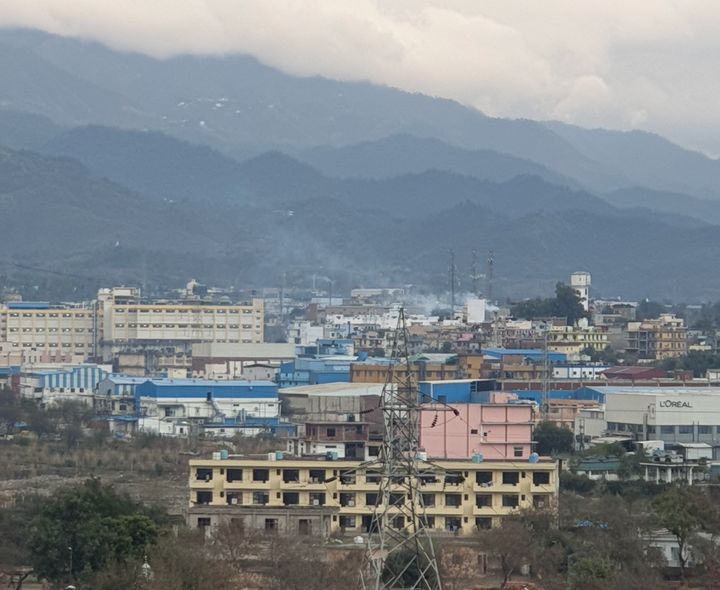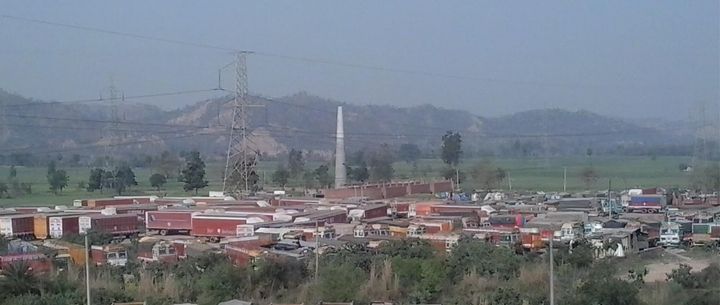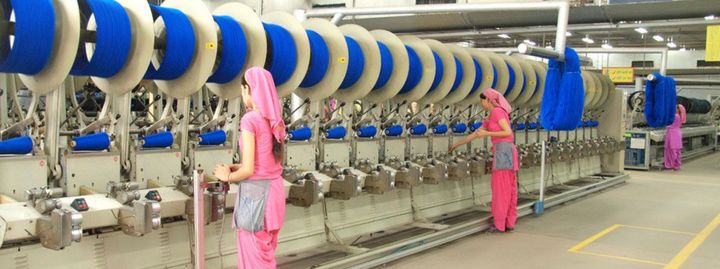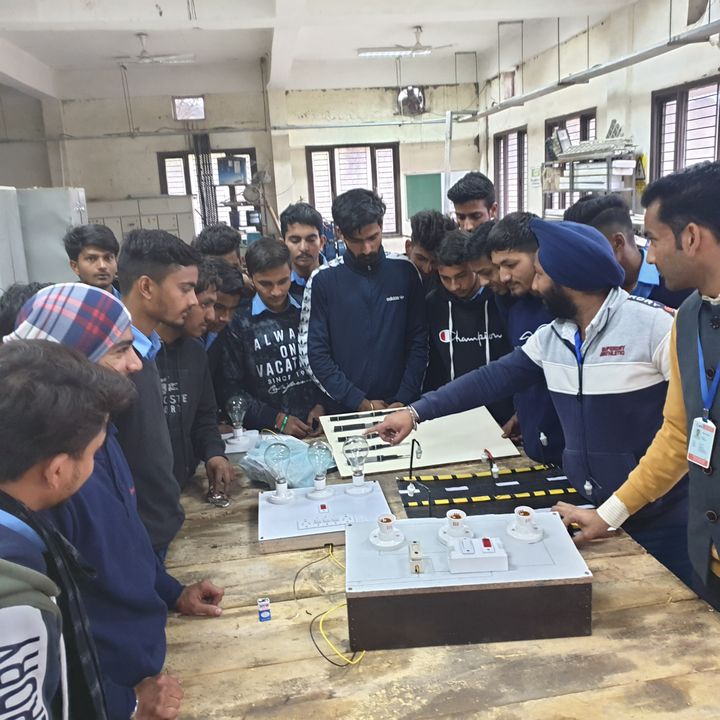
BADDI, Himachal Pradesh — When a host of newly announced incentives lured Punjab-based Sukhjit Starch and Chemicals Limited across the state border to Himachal Pradesh back in 2005, the management hoped its newest plant would lay the foundations for a new phase of expansion for the 77-year-old company.
The company was one of thousands of medium and small industries to flock to the region. Fifteen years later, as the incentive policy finally comes to a close, Sukhjit Chemicals is one of the few companies still standing, and largely only because of the scale of the investment they have made in Himachal Pradesh.
For the latest news and more, follow HuffPost India on Twitter, Facebook, and subscribe to our newsletter.
Several smaller companies have upped and left: With the tax and excise holiday coming to an end, companies say there is little reason to remain in Himachal Pradesh, a state plagued by inadequate infrastructure, irrational transportation costs demanded by truck unions and a poorly-designed employment scheme that mandates at least 80% of the workforce must be local.
Some incentives, like an exemption on electricity duties, were never even implemented, industrialists say; meanwhile, a Free Trade Agreement between China and Pakistan, signed in April 2019, has resulted in a sharp drop in demand for textile industries based in the Baddi-Barotiwala-Nalagarh industrial corridor.
The continued slowdown of the larger Indian economy under the Narendra Modi regime has only added to Baddi’s woes.
“Around 50,000 workers have left BBN in the last one year due to shortage of jobs,” said Devinder Baloni, Director of TDS placement, a recruitment agency in Baddi. “While Pharma industries have shifted their domestic production to other states due to poor infrastructure and road connectivity, many MSMEs were also shut down due to economic slump.”
ALSO READ: In Punjab, A Handcrafted Box Modi Gifted Trump Reveals Depth Of India’s Economic Slowdown
The Bharatiya Janata Party (BJP)-led state government in Himachal Pradesh has reacted to the crisis much like the BJP-led government Union Government: a mixture of denial, obfuscation and refusal to acknowledge the depth of the crisis.
While the state government keeps a careful tally of new industries registered in Baddi, they keep no account of unit closures. As a consequence, many existing companies have simply opened “new” subsidiaries on paper to continue milking incentives all the way up to 2023, even as the situation on the ground remains unchanged.
“We only came to know about the closure of an industry when it approaches us for de-registration of their unit. We have received only two such requests since last year. We are not aware of the units who have closed down their units either temporarily or permanently.” Sanjay Kanwar, Deputy Director, Industries at Baddi, admitted.
The most recent numbers for closures date back to January 2019, 12 months before the Indian economy slipped into an unprecedented downward spiral. At the time, figures tabled in the state Vidhan Sabha stated that at least 118 industries had shuttered operations along the length of Himachal Pradesh’s industrial corridor.
“We only came to know about the closure of an industry when it approaches us for de-registration of its unit. We have received only two such requests since last year. We are not aware about the units who have closed down their units either temporarily or permanently. "”
- Sanjay Kanwar, Deputy Director, Industries, Baddi
In her budget speech in February 2020, Finance Minister Nirmala Sitharaman called on India’s private sector to lift growth through investment. Sitharaman’s budget, which relied on fiscal adjustments rather than structural reform, came three quarters after the Finance Minister had lowered corporate taxes in an attempt to boost private investment.
Yet, the rapid rise and sudden collapse of industries in Baddi reveals the shortcomings of this approach and suggests the problems of the Indian economy will require much deeper fixes than just tax holidays.
In 2003, the National Democratic Alliance ( NDA) government led by Prime Minister Atal Behari Vajpayee announced tax incentives for the hilly states of Jammu Kashmir, Himachal Pradesh and North-East states of India for the promotion of industries and an aim to provide skill development and employment to the local youths.
In Himachal Pradesh, the policy offered eight per cent excise waiver, 100 percent income tax exemption for ten years and a capital subsidy of 15 percent of the total project cost with a cap of Rs 30 lakh. Tax exemptions would be calculated from the date of setting up of the industry in the state.
Himachal Pradesh also offered slash duty on electricity from 13% to one percent for units where local Himachali workers made up at least 70% of the workforce. The policy was revised in 2019 to increase the local workforce’s share to 80%.
In the first few years, industries from Punjab and Haryana quickly flocked to Baddi, which is barely 40 km from Chandigarh.
But soon, the area’s shortcomings became painfully visible.
For Sukhjit Chemicals, the first shock was the lack of maize — the primary raw material for their plant. In 2005, the state government claimed to have a surplus of maize, said Bhavdeep Sardana, the managing director, but as the company soon experienced a maize shortage — possibly due to climate change.
“The policy of giving electricity duty exemption to new industries was never notified,” Sardana said, adding that the company had struggled to find a skilled local workforce. “In Himachal, it is difficult to find a BSC (Chemistry) who can work in our industry. So, despite the abundance of jobs in the industrial sector, we are unable to hire local talent.”
For Jalandhar based industrialist Nitin Kohli, Managing Director of Hike Shoes, the problem was the lack of connectivity. The government had promised to upgrade highways connecting Baddi to the rest of north India and had also claimed that a rail-link was in the works.
Instead, Kolhi said, he found himself at the mercy of local truck operators.
“This is insane,” Kolhi said. “There is no rationalisation of freight tariffs. For a 30 km trip, they charge for 300 km. For a one-way trip to far off places like Mumbai and Chennai, they charge for both ways.”
Kolhi said Hike Shoes was shutting its plant in Baddi and looking to invest elsewhere in the country.

In 2017, Union Minister for Highways Nitin Gadkari laid the foundation stone for a project to expand the Pinjore-Nalagarh section of national highway 21-A from two lanes to four lanes. Three years on, the expansion works are yet to begin.
The proposed rail project has fared no better: While the central government signed off on a rail-line between Baddi and Pinjore in 2017; that project has gone nowhere as well.
Local industrialists and bureaucrats said the projects had been stymied by the Haryana government, also run by the BJP, on the fears that Haryana will suffer if the state’s own industries flee across the border to Himachal Pradesh.
The Baddi experiment
Much like the broader Indian economy, Baddi has also been affected by global trade agreements. The local textile industry, for instance, was one of the few bright spots in the region.
Then in April 2019, a Free Trade Agreement between China and Pakistan slashed duties on Pakistani goods entering China.
The China-Pakistan agreement, IMJS Sidhu, President, Baddi Operations for Vardhman Industries told HuffPost India, meant textile exports in Baddi feel by as much as 25% in a single year.
“China has given zero duty access to Pakistan while levied 3.5 to 4 percent duty on India exports,” Sidhu said. “This has impacted India’s cotton yarn exports that constituted around 30 percent of India’s exports last year.”

He further added that GST implementation and demonetisation too has affected the sentiments of the industrialists and consumers.
The region’s pharma industry has taken issue with a recent directive to cap trade margins on non-price controlled drugs at 30%, with a 20% margins for retailers.
The result is likely to affect less efficient manufacturers in places like Baddi.
Dr Rajesh Gupta, Director of Dallas Pharmaceuticals and president of the Baddi Pharmaceutical Association, told HuffPost India that pharmaceuticals is one of the few industries that have seen growth of up to 8 percent in the last year.
Yet Baddi’s pharma companies are shifting their domestic production elsewhere.
“How could we survive if we too have to give the trade margin similar to a multinational company. Also, why would a retailer sell an Indian medicine if he gets the same trade margin in a drug manufactured by a multinational company,” said Gupta.
Despite its many setbacks, the Baddi experiment could have been considered a success if only it had provided jobs to locals. The policy mandated that at least 70% of jobs should go to Himachalis to avail of certain exemptions — a quota that was subsequently raised to 80%.
Yet few companies have hit these quotas. While companies say the locals are unwilling to work in their factories, Baddi’s residents say the wages the companies offer are too low.
“Most of the Himachalis have land and are used to leading peaceful and comfortable lives. Unlike their counterparts from Bihar and Uttar Pradesh, they cannot share a single room with more than two people. Also, they do not want to work for a monthly salary of Rs 7000 as offered by the industries. They are only interested in government jobs. This is the main reason why the town has more migratory workers than the local ones,” said Vijay K. Arora, Director and CEO of Baddi Infrastructure and technical training Institute (BTTI).

During HuffPost India’s visit to the labour department office in Baddi, Labour officer Munish Karol handed over a list of Himachali and non Himachali workers in Baddi industries. However, the secretarial staff informed the list was not updated from the last four years.
When asked, Karol tore apart the list in front of this correspondent and put the pieces on the table. He later asked this correspondent to file an RTI to get the information.
“To maintain a list of Himachali and non Himachali workers is the job of the industries department and not of the Labour office since they approve tariff exemptions for the industries. But we sometimes do it under moral obligation,” said Karol.
The Industries department, on the other hand, refuted the claim made by Karol. “It is the job of the labour department to check the compliance on ground by checking the Aadhaar or any other identity proofs of these workers. Later, they have to submit a report to us for granting necessary exemptions to these industrialists,” said Kanwar.
A visit to BTTI in Jharmajri village of Baddi narrates a different tale as envisaged by the state government. There were more students from migratory families than those from Himachal. During interaction with HuffPost, the local youths informed that the industry at Baddi has failed to attract local workforce.
“Why would we work in an industry when we can earn more by working in our fields? Also, they do not prefer to recruit local workers and check the Aadhaar cards before giving jobs. Anyone with a local address will not find a job here as they are scared of him taking more holidays,” said Diwan Chand who has 50 bighas of cultivation land in Baddi. He is presently doing an electrician course to get a government job.